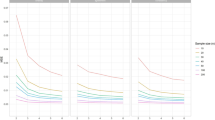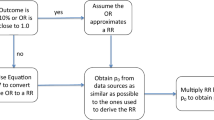Abstract
Cox models with time-varying coefficients offer great flexibility in capturing the temporal dynamics of covariate effects on event times, which could be hidden from a Cox proportional hazards model. Methodology development for varying coefficient Cox models, however, has been largely limited to right censored data; only limited work on interval censored data has been done. In most existing methods for varying coefficient models, analysts need to specify which covariate coefficients are time-varying and which are not at the time of fitting. We propose a dynamic Cox regression model for interval censored data in a Bayesian framework, where the coefficient curves are piecewise constant but the number of pieces and the jump points are covariate specific and estimated from the data. The model automatically determines the extent to which the temporal dynamics is needed for each covariate, resulting in smoother and more stable curve estimates. The posterior computation is carried out via an efficient reversible jump Markov chain Monte Carlo algorithm. Inference of each coefficient is based on an average of models with different number of pieces and jump points. A simulation study with three covariates, each with a coefficient of different degree in temporal dynamics, confirmed that the dynamic model is preferred to the existing time-varying model in terms of model comparison criteria through conditional predictive ordinate. When applied to a dental health data of children with age between 7 and 12 years, the dynamic model reveals that the relative risk of emergence of permanent tooth 24 between children with and without an infected primary predecessor is the highest at around age 7.5, and that it gradually reduces to one after age 11. These findings were not seen from the existing studies with Cox proportional hazards models.





Similar content being viewed by others
References
Biller C (2000) Adaptive Bayesian regression splines in semiparametric generalized linear models. J Comput Graph Stat 9(1):122–140
Biller C, Fahrmeir L (2001) Bayesian varying-coefficient models using adaptive regression splines. Stat Model 1(3):195–211
Brezger A, Lang S (2006) Generalized structured additive regression based on Bayesian P-splines. Comput Stat Data Anal 50(4):967–991
Brooks SP, Giudici P (1999) Convergence assessment for reversible jump MCMC simulations. In: Bernardo JM, Berger JO, Dawid AP, Smith A (eds) Bayesian statistics 6—proceedings of the sixth valencia international meeting. Clarendon Press, Oxford, pp 733–742
Cai T, Betensky RA (2003) Hazard regression for interval-censored data with penalized spline. Biometrics 59(3):570–579
Cai Z, Sun Y (2003) Local linear estimation for time-dependent coefficients in Cox’s regression models. Scand J Stat 30(1):93–111
Celeux G, Forbes F, Robert CP, Titterington DM (2006) Deviance information criteria for missing data models (Pkg: P651–706). Bayesian Anal 1(4):651–674
Cox DR (1972) Regression models and life-tables (with discussion). J R Stat Soc B 34:187–220
De Iorio M, Johnson WO, Müller P, Rosner GL (2009) Bayesian nonparametric nonproportional hazards survival modeling. Biometrics 65(3):762–771
Denison DGT, Mallick BK, Smith AFM (1998) Automatic Bayesian curve fitting. J R Stat Soc B 60:333–350
Dimatteo I, Genovese CR, Kass RE (2001) Bayesian curve-fitting with free-knot splines. Biometrika 88(4):1055–1071
Fahrmeir L, Lang S (2001) Bayesian inference for generalized additive mixed models based on Markov random field priors. J R Stat Soc C 50(2):201–220
Fan J, Gijbels IA, King M (1997) Local likelihood and local partial likelihood in hazard regression. Annals Stat 25(4):1661–1690
Fine JP, Yan J, Kosorok MR (2004) Temporal process regression. Biometrika 91(3):683
Geisser S, Eddy WF (1979) A predictive approach to model selection (Corr: V75 p765). J Am Stat Assoc 74:153–160
Gilks WR, Wild P (1992) Adaptive rejection sampling for Gibbs sampling. Appl Stat 41:337–348
Goetghebeur E, Ryan L (2000) Semiparametric regression analysis of interval-censored data. Biometrics 56(4):1139–1144
Goggins WB, Finkelstein DM, Schoenfeld DA, Zaslavsky AM (1998) A Markov chain Monte Carlo EM algorithm for analyzing interval-censored data under the Cox proportional hazards model. Biometrics 54:1498–1507
Gómez G, Calle ML, Oller R, Langohr K (2009) Tutorial on methods for interval-censored data and their implementation in R. Stat Modell 9(4):259
Gray RJ (1992) Flexible methods for analyzing survival data using splines, with application to breast cancer prognosis. J Am Stat Assoc 87:942–951
Green PJ (1995) Reversible jump Markov chain Monte Carlo computation and Bayesian model determination. Biometrika 82:711–732
Hastie T, Tibshirani R (1993) Varying-coefficient models. J R Stat Soc B 55(4):757–796
Hennerfeind A, Brezger A, Fahrmeir L (2006) Geoadditive survival models. J Am Stat Assoc 101(475):1065–1075
Ibrahim JG, Chen M-H, Sinha D (2001) Bayesian survival analysis. Springer, New York
Jara A, Lesaffre E, De Iorio M, Quitana F (2010) Bayesian semiparametric inference for multivariate doubly-interval-censored data. Ann Appl Stat 4(4):2126–2149
Kauermann G (2005) Penalized spline smoothing in multivariable survival models with varying coefficients. Comput Stat Data Anal 49(1):169–186
Kim S, Chen M-H, Dey DK, Gamerman D (2007) Bayesian dynamic models for survival data with a cure fraction. Lifetime Data Anal 13(1):17–35
Kneib T (2006) Mixed model-based inference in geoadditive hazard regression for interval-censored survival times. Comput Stat Data Anal 51(2):777–792
Kneib T, Fahrmeir L (2007) A mixed model approach for geoadditive hazard regression. Scand J Stat 34(1):207–228
Kooperberg C, Clarkson DB (1997) Hazard regression with interval-censored data. Biometrics 53:1485–1494
Kooperberg C, Stone CJ, Truong YK (1995) Hazard regression. J Am Stat Assoc 90:78–94
Martinussen T, Scheike TH (2002) A flexible additive multiplicative hazard model. Biometrika 86(2):283–298
Murphy SA, Sen PK (1991) Time-dependent coefficients in a Cox-type regression model. Stoch Process Appl 39:153–180
Pan W (1999) Extending the iterative convex minorant algorithm to the Cox model for interval-censored data. J Comput Graph Stat 8:109–120
Pan W (2000) A multiple imputation approach to Cox regression with interval-censored data. Biometrics 56(1):199–203
Peng L, Huang Y (2007) Survival analysis with temporal covariate effects. Biometrika 94(3):719–733
Satten GA (1996) Rank-based inference in the proportional hazards model for interval censored data. Biometrika 83:355–370
Sinha D, Chen M-H, Ghosh SK (1999) Bayesian analysis and model selection for interval-censored survival data. Biometrics 55(2):585–590
Spiegelhalter DJ, Best NG, Carlin BP, van der Linde A (2002) Bayesian measures of model complexity and fit (Pkg: P583–639). J R Stat Soc B 64(4):583–616
Tian L, Zucker D, Wei L (2005) On the Cox model with time-varying regression coefficients. J Am Stat Assoc 100(469):172–183
Vanobbergen J, Martens L, Declerck D, Lesaffre M (2000) The Signal Tandmobiel (R) Project: A longitudinal intervention oral health promotion study in Flanders (Belgium): Baseline and first year results. Eur J Paediatric Dentistr 2:87–96
Acknowledgments
We would like to thank the Editor-in-Chief, an Associate Editor, and two referees for their helpful comments and suggestions, which led to an improved version of the article. This research was partially supported by NIH grants GM70335 and CA74015 and NSF grant DMS0805965.
Author information
Authors and Affiliations
Corresponding author
Appendix: Sampling details in the update move
Appendix: Sampling details in the update move
The values of \(\mu _i\) and \(\sigma _i\) in (5) are calculated as follows.
When \(J=1\), it corresponds to time-independent coefficient model. There is only one piece of \(\theta (t)\) to sample, \(\mu _1 = 0\) and \(\sigma _1^2 = \infty \).
When \(J>1\), for \(j=1\),
for \(j = 2,\ldots , J - 1\),
and for \(j=J\),
Rights and permissions
About this article
Cite this article
Wang, X., Chen, MH. & Yan, J. Bayesian dynamic regression models for interval censored survival data with application to children dental health. Lifetime Data Anal 19, 297–316 (2013). https://doi.org/10.1007/s10985-013-9246-8
Received:
Accepted:
Published:
Issue Date:
DOI: https://doi.org/10.1007/s10985-013-9246-8




